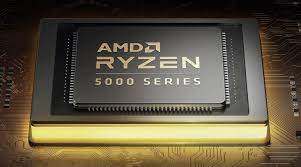On Tuesday, Advanced Micro Devices predicted a solid year-end, fueled by the anticipated release of artificial intelligence chips that might rival Nvidia semiconductors.
AMD’s shares increased about 3% in after-hours trading.
According to CEO Lisa Su, AMD will increase manufacturing of its premier MI300 artificial intelligence chips in the fourth quarter. The sophisticated H100 processors that Nvidia already sells are expected to face competition from the scarce accelerator chips.
Su claimed that “very high” client interest in the MI300 series processors and an increase in AMD’s third-quarter collaborations with “top-tier cloud providers, large enterprises, and numerous leading AI companies” were also noteworthy developments.
In the booming market for cutting-edge AI processors, investors are expecting that the MI300 chips, scheduled for release later this year, will compete with Nvidia.
AMD has not yet developed specialized chips for the lucrative Chinese market, unlike Nvidia and Intel, and MI300s surpass the performance thresholds for sale to China under export limitations announced in October.
To adhere to U.S. Commerce Department regulations on the export of cutting-edge AI semiconductors to China, Nvidia updated its H100 chips. Su stated during a conference call with analysts on Tuesday that AMD is considering a similar approach with its MI300 and older MI250 chips.
Naturally, we intend to adhere to all export regulations set forth by the United States. However, we do think there is a chance to create something for our Chinese clientele who are searching for AI solutions, so we’ll keep moving in that direction.
Although AMD has not provided a precise full-year projection, it has stated that it anticipates 2023 data centre business sales, including those of MI300 chips, to surpass $6.04 billion in 2022.
Nvidia still has supply issues, according to Jenny Hardy, portfolio manager at GP Bullhound, which owns Nvidia and AMD stock, which makes room for AMD’s processor.
Because many people can’t get their hands on Nvidia chips, AMD will probably experience great demand if they can scale up manufacturing and introduce those MI300 processors in the fourth quarter. Therefore, we would think that AMD can efficiently close some of the supply-demand imbalance, according to Hardy.
According to Su, AMD has plenty of MI300 chip components for both an “aggressive” fourth-quarter launch and supplies through 2024.
Su mentioned the “strong interest” in its outdated MI250 processor, which is still a “very good option” for simpler AI applications.
Revenue from AMD’s client business dropped 54% to $998 million from $2.2 billion a year earlier, while revenue from its data centre division dropped 11% to $1.32 billion.
According to analysts, major cloud providers like Microsoft and Google want to increase their data centre spending in the second half of the year, with an emphasis on infrastructure and AI processors.
Nevertheless, a decrease in PC shipments has abated and demand has begun to rise.
Regarding the third quarter, “looking forwards, we expect our Data Centre and Client segment revenues to each grow by a double-digit percentage sequentially driven by increasing demand for our EPYC and Ryzen processors, partially offset by Gaming and Embedded segment declines,” said AMD’s vice president of finance Jean Hu. Revenue for the current quarter was predicted by the corporation to be $5.7 billion, plus or minus $300 million

















